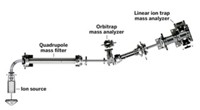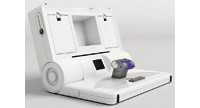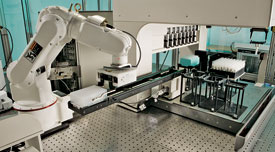Advertisement
Grab your lab coat. Let's get started
Welcome!
Welcome!
Create an account below to get 6 C&EN articles per month, receive newsletters and more - all free.
It seems this is your first time logging in online. Please enter the following information to continue.
As an ACS member you automatically get access to this site. All we need is few more details to create your reading experience.
Not you? Sign in with a different account.
Not you? Sign in with a different account.
ERROR 1
ERROR 1
ERROR 2
ERROR 2
ERROR 2
ERROR 2
ERROR 2
Password and Confirm password must match.
If you have an ACS member number, please enter it here so we can link this account to your membership. (optional)
ERROR 2
ACS values your privacy. By submitting your information, you are gaining access to C&EN and subscribing to our weekly newsletter. We use the information you provide to make your reading experience better, and we will never sell your data to third party members.
Analytical Chemistry
Inside Instrumentation
Technology and Business news for the laboratory world
by Celia H. Arnaud and Ann M. Thayer
September 17, 2007
| A version of this story appeared in
Volume 85, Issue 38
Bruker Offers Nanobay NMR
(1) Bruker BioSpin has introduced an integrated nuclear magnetic resonance spectrometer called the Avance III NanoBay. It incorporates the company's Avance III NMR instrument in a compact enclosure for use with 300- or 400-MHz magnets. Despite its small size, the system has full capabilities and user-friendly software, including Japanese and Mandarin Chinese graphical user interfaces. The system can handle industrial applications ranging from high-throughput screening in analytical chemistry to structure verification in drug discovery. In academia, it could be used in research or instruction.
DNA Analysis Improvements
The 454 Life Sciences division of Roche Applied Science has launched new products for the ultra-high-throughput Genome Sequencer FLX (GS FLX) system. Two new plate formats, a "short read" plate for 100 base pairs and a "long read" for 250-300 base pairs, provide researchers with greater flexibility and should decrease the cost per run, the company says. Also, 454 Life Sciences has upgraded software for GS FLX to incorporate Sanger sequencing reads and to integrate GS FLX data with third-party software. Separately, Applied Biosystems (ABI) has announced a software development community initiative to help independent software vendors build bioinformatics applications for DNA sequencing. ABI will make sample data sets, data file formats, and data conversion tools for its SOLiD System DNA-sequencing platform available.
Merck, Eksigent Develop Mobile HPLC
On-line reaction monitoring is used often in pilot plants, and high-performance liquid chromatography is a common analytical tool, but the combination is seldom found at the lab bench. To create a convenient research tool, Merck process scientists and collaborators at Eksigent Technologies have developed a compact and mobile HPLC unit for on-line reaction monitoring in the lab (Org. Process Res. Dev., DOI: 10.1021/op7000854). Their AliquotMobile system consists of a cart-mounted microfluidic ExpressLC-100 HPLC instrument and a tethered, automated sampling and dilution module. The aliquot size is a few microliters, the aliquot dilution is adjustable, and sampling rates range upward from a minimum of every 4 minutes. Reaction quenching is also possible. Data for ongoing or completed studies can be viewed to monitor reaction progress or kinetics.
Flurry of X-ray analysis products released
Bruker AXS has launched the SMART X2S (crystal-to-structure) benchtop X-ray crystallography system. The instrument is designed for chemists with no special training in crystallography to use in their own labs. Analysis is automated, from sample loading and alignment to structure solution. The system weighs less than 70 kg and requires 0.5 kW of standard AC power.
Rigaku has introduced the Ultima IV for general-purpose X-ray diffraction (XRD) analysis in materials science, semiconductors, and nanotechnology R&D. The instrument, half the size of conventional XRD units, has a new high-speed detector and cross-beam optics. In addition, Rigaku has added two charge-coupled device detectors to its crystallography product line: Saturn 944+, optimized for macromolecules, and 724+ for small molecules.
Thermo Fisher Scientific has introduced the ARL 9900 Series X-ray WorkStation(2), which integrates X-ray fluorescence (XRF) and diffraction analysis in one unit. The combination allows complete elemental and structural analysis with a single instrument. Analysis is fully automated in either XRF or XRD mode. Data from either method can be used for processing data from the other.
Thermo Couples GC With ICP MS
Thermo Fisher Scientific is offering a kit to couple gas chromatography and its ELEMENT 2 and ELEMENT XR high-resolution inductively coupled plasma mass spectrometers (ICP-MS). The kits are designed to enable scientists to use a magnetic sector ICP-MS as a GC detector and expand the capabilities of ICP-MS analysis of volatile compounds. The kit is intended to allow scientists in the environmental, clinical, and biological markets to detect and quantify volatile compounds containing elements such as sulfur, tin, phosphorus, mercury, and bromine.
Inside Instrumentation is written by Celia H. Arnaud and Ann M. Thayer. Contact them via e-mail to instrumentation@acs.org.







Join the conversation
Contact the reporter
Submit a Letter to the Editor for publication
Engage with us on Twitter